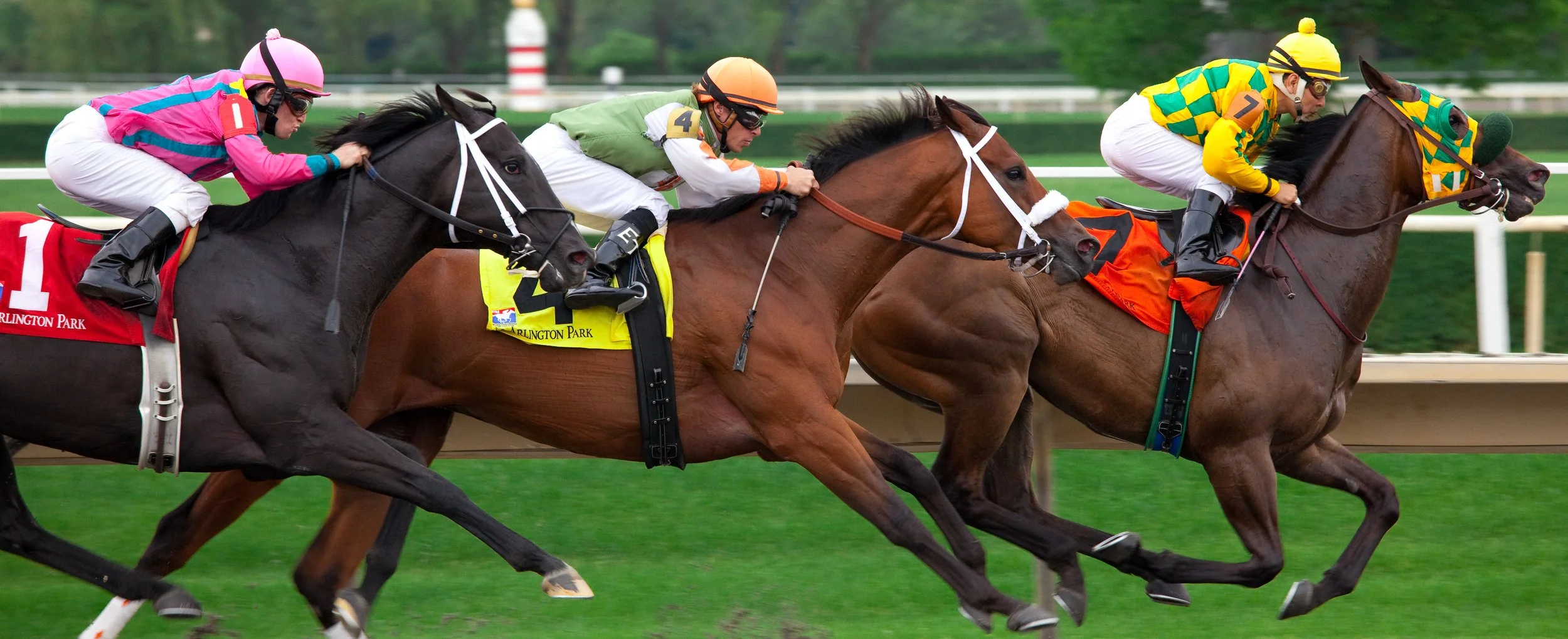Blog By: Christian T. Deeter
On October 4, 2023, the Horseracing Integrity and Safety Act (HISA) was challenged by the National Horsemen’s Benevolent and Protective Association (NHBPA) and the state of Texas, among others, in the U.S. Fifth Circuit Court of Appeals for the second time, after this same Circuit found HISA unconstitutional last year.[i] HISA created the Horseracing Integrity and Safety Authority (Authority), a private self-regulatory organization tasked with developing uniform rules in thoroughbred racing across the United States.[ii]
Following the Fifth Circuit’s decision declaring HISA unconstitutional in 2022, Congress intervened, and “amend[ed] the enabling legislation to grant the [Federal Trade Commission] (FTC) greater control over the Authority’s actions.”[iii] The Sixth Circuit deemed this intervention adequate, stating that “[a]s amended, the Horseracing Act gives the FTC the final say over implementation of the Act relative to the Horseracing Authority,” thus allowing the Court to uphold the Act against both non-delegation and anti-commandeering challenges.[iv] The non-delegation doctrine limits Congress’ ability to “empower a private entity to exercise unchecked legislative or executive power.”[v] Further, the anti-commandeering doctrine “prohibits the federal government from ‘commandeering’ state personnel or resources” to “enforce federal laws or implement federal programs.”[vi] Because the Authority “wields materially different power from the FTC, yields to FTC supervision, and lacks the final say over the content and enforcement of the law,” the Sixth Circuit, correctly, found that the Authority is sufficiently subordinate to the FTC and is therefore constitutionally sound.[vii]
The Fifth Circuit case, however, may lead to a different outcome, potentially setting up a circuit split forcing resolution via the United States Supreme Court.[viii] The same panel of judges that found HISA unconstitutional last year are, once again, hearing the case.[ix] Attorneys representing the National Horsemen’s Benevolent and Protective Association (NHBPA) and a number of other plaintiffs/appellants argued that, even with the amendments to the original enabling legislation, there are still at least three areas where the Authority’s rulemaking power is not adequately subordinate to the FTC.[x] The appellants fear that “the Authority’s rules govern unless [the FTC] can shove a rule through notice-and-comment rulemaking,” meaning that, instead of the FTC governing the industry, it will be the Authority.[xi] Further, the appellants argued that the Authority portrays itself as both a governmental body or a private organization depending on which of its interests are being challenged.[xii]
The Authority defended itself by pointing to the changes made following these same judges declaring HISA unconstitutional.[xiii] In their brief, the Authority pointed out that Congress, the Executive, and every federal court that has considered the amended version of the Act have all found HISA to be constitutional.[xiv] The lower court, after the case was remanded following the Fifth Circuit’s reversal, deemed that this new version was constitutional because the Fifth Circuit’s identified problems were fixed in the law’s rewrite.[xv]
Regarding the anti-commandeering challenge, the Supreme Court declared that “if Congress intends to alter the ‘usual constitutional balance between the States and the Federal Government,’ it must make its intention to do so ‘unmistakably clear in the language of the statute.’”[xvi] Here, HISA was enacted to implement and enforce uniform rules in thoroughbred racing, as it established a recognized “private, independent, self-regulatory, nonprofit corporation.”[xvii] Further, the enabling legislation gave the Authority “exclusive national authority” over the safety and anti-doping measures in thoroughbred racing.[xviii] This shows Congress’ unmistakably clear intention to alter the current regulatory regime, or lack thereof, of horseracing safety by the individual states.
Four months following October’s arguments, the parties involved are still awaiting the Fifth Circuit’s decision.[xix] As such, horseracing’s potential showdown at the Supreme Court hangs in the balance as well. Just as the lower court decided in May 2023[xx], the Fifth Circuit should also find the amended version of HISA constitutional. The amended Act allows the FTC to supervise any rules governing the industry.[xxi] In order for implementation of any rules drafted by the Authority, approval by the FTC is necessary, so long as the proposals are consistent with the Act.[xxii] If deemed “necessary or appropriate,” the FTC “may abrogate, add to, and modify the rules.”[xxiii] This sets up a “clear hierarchy” which places the Authority sufficiently under the FTC’s control.[xxiv] Further, Congress clearly expressed its “exclusive national authority” over the safety and anti-doping rules in thoroughbred racing in the language of the Act.[xxv] As amended, HISA violates neither the non-delegation doctrine nor the anti-commandeering doctrine. Accordingly, the Fifth Circuit should follow the Sixth Circuit’s guidance and find HISA constitutional.
[i] Dick Downey, Oral Arguments Return in Fifth Circuit HISA Challenge, Blood-Horse (Oct. 4, 2023), https://www.bloodhorse.com/horse-racing/articles/272349/oral-arguments-return-in-fifth-circuit-hisa-challenge [https://perma.cc/BE8F-3NXN]; Nat’l Horsemen’s Benevolent & Protective Ass’n v. Black, 53 F.4th 869, 872 (5th Cir. 2022).
[ii] Our Mission, Horseracing Integrity and Safety Auth., https://www.hisaus.org/about-us [https://perma.cc/NX6W-5RKZ] (last visited Nov. 9, 2022); 15 U.S.C. §§ 3051-60..
[iii] Downey, supra note i.
[iv] Oklahoma v. United States, 62 F.4th 221, 225 (6th Cir. 2023).
[v] Id at 228.
[vi] Mike Maharrey, The Anti-Commandeering Doctrine: An Introduction, Tenth Amend. Ctr. (Jan. 4, 2021), https://tenthamendmentcenter.com/2021/01/04/the-anti-commandeering-doctrine-an-introduction/ [https://perma.cc/PCR4-8NWH].
[vii] Oklahoma, 62 F.4th at 229.
[viii] Downey, supra note i.
[ix] Id.
[x] T.D. Thornton, The Wait Begins: Fifth Circuit Hears HISA Constitutionality Appeal Arguments, Thoroughbred Daily News (Oct. 4, 2023), https://www.thoroughbreddailynews.com/the-wait-begins-fifth-circuit-hears-hisa-constitutionality-appeal-arguments/ [https://perma.cc/6K9R-HQCU].
[xi] Id.
[xii] Id.
[xiii] Id.
[xiv] Id.
[xv] Id.
[xvi] Gregory v. Ashcroft, 501 U.S. 452, 460 (1991) (quoting Atascadero State Hospital v. Scanlon, 473 U.S. 234, 242 (1985)).
[xvii] 15 U.S.C. § 3052(a).
[xviii] 15 U.S.C. § 3054(a)(2).
[xix] Andrew Cohen, Keeping Pace: Tick, Tock, Your Honors – Horse Racing Holds Its Breath Waiting For A HISA Ruling, Paulick Report (Feb., 26, 2024), https://paulickreport.com/features/keeping-pace/keeping-pace-tick-tock-your-honors-horse-racing-holds-its-breath-waiting-for-a-hisa-ruling [https://perma.cc/PJ5M-84LX].
[xx] Oklahoma, 62 F.4th at 229.
[xxi] Id.
[xxii] Id at 230; 15 U.S.C. § 3053(c)(2).
[xxiii] Oklahoma 62 F.4th at 230; 15 U.S.C. § 3053(3).
[xxiv] Id.
[xxv] 15 U.S.C. § 3054(a)(2).



